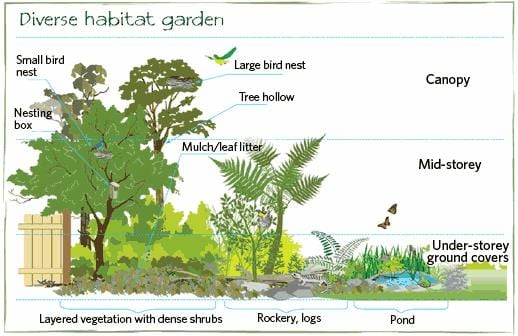Everything about Hilton Head Landscapes
Everything about Hilton Head Landscapes
Blog Article
Hilton Head Landscapes for Beginners
Table of ContentsThings about Hilton Head LandscapesThe Definitive Guide to Hilton Head LandscapesThe 3-Minute Rule for Hilton Head LandscapesGet This Report on Hilton Head LandscapesAbout Hilton Head LandscapesHilton Head Landscapes Fundamentals ExplainedHilton Head Landscapes Fundamentals Explained
Line produces all kinds and patterns and can be used in a variety of means in the landscape. Line in the landscape is produced by the side between two products, the synopsis or silhouette of a type, or a long linear function. Lines are a powerful device for the designer because they can be used to create an unlimited selection of shapes and types, and they manage activity of the eye and the body.

Lines in the landscape. The residential or commercial properties of lines determine exactly how individuals respond to the landscape, both mentally and physically.
The Basic Principles Of Hilton Head Landscapes
Curved lines create an informal, all-natural, unwinded character that is associated a lot more with nature and asymmetrical balance. Bent lines relocate the eye at a slower rate and include mystery to the room by producing concealed views.
Vertical lines in the landscape consist of tall, slim plant material, such as trees, or tall structures, such as an arbor or a bird house on a post. Straight lines relocate the eye along the ground plane and can make a room feel bigger. Reduced lines are more subdued and develop a feeling of remainder or repose.
The Main Principles Of Hilton Head Landscapes
Lines are also produced by the vertical kinds of constructed attributes and plant material. There are three primary line types that produce type in the landscape: bedlines, hardscape lines, and plant lines.
Bedlines link plant material to your home and hardscape due to the fact that the eye complies with the line, relocating the gaze via the landscape. Hardscape lines are produced by the side of the hardscape, which delineates the constructed framework. Line can additionally be produced by lengthy and narrow materials, such as a fencing or wall surface.
The Single Strategy To Use For Hilton Head Landscapes
Kind is found in both hardscape and plants, and it is generally the leading aesthetic component that spatially arranges the landscape and commonly establishes the design of the garden. The kind of structures, plant beds, and garden accessories also establishes the overall type motif of the garden. Official, geometric kinds include circles, squares, and polygons.
Plants create form in the yard with their outlines or silhouettes, but form can likewise be defined by a gap or adverse area between plants - bluffton landscaping (https://qualtricsxm5z596vv95.qualtrics.com/jfe/form/SV_eEczR6xKXKuv6mi). Circles can be cycles, or they can be split right into half circles or circle sectors and integrated with lines to produce arcs and tangents
Rumored Buzz on Hilton Head Landscapes
Circles can likewise be extended into ovals and ellipses for even more range and interest. Circles are a solid style form since the eye is always attracted to the center, which can be made use of to highlight a prime focus or link various other forms. Number 2. Round forms in hardscape and grass panels.
The square type can additionally be segmented and pre-owned repetitively to develop a grid pattern. Unlike circles, squares are stronger on the sides, which can be lined up or overlapped to create unique patterns and more complicated types.
Meandering lines commonly resemble the all-natural program of rivers or streams and can be called smooth lines with deeply bent undulations. Meandering lines (Figure 3) work well for paths, plant bedlines, and completely dry stream beds. Twisting lines can add interest and mystery to a yard by leading audiences around corners to uncover brand-new sights and rooms.
The Hilton Head Landscapes Ideas

Number 5. Fragmented edges: stepping rocks in pathway. Type is the most enduring top quality of a plant (Landscaping bluffton sc). https://www.figma.com/design/CqNShAPJ75DpMEeGt0LfQR/Untitled?t=lZt5bM9P0avBSZvk-1. Typical plant types are well established and standardized, as type is the most regular and linked here well-known attribute of plants. Form can additionally be produced through the massing of plants, where the overall mass develops a different form than a specific plant.
A highly different form has to be made use of with careone or 2 job well as a prime focus, but a lot of create chaos. Natural plant types, as opposed to over-trimmed forms, ought to establish the bulk of the structure. The relevance of total form is basically based on the checking out perspectivethe form of a tree can show up rather different to an individual standing under the canopy versus viewing the tree from a distance in an open area.
Some Known Factual Statements About Hilton Head Landscapes
Plant kinds also create and define the space or open areas in between the plants, creating either convex or concave types in deep spaces. High-arching tree branches generally create a concave open area under the branches, and a rounded cover with low branches loads the area to create a convex kind outdoors area under the tree.

Report this page